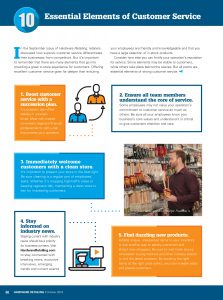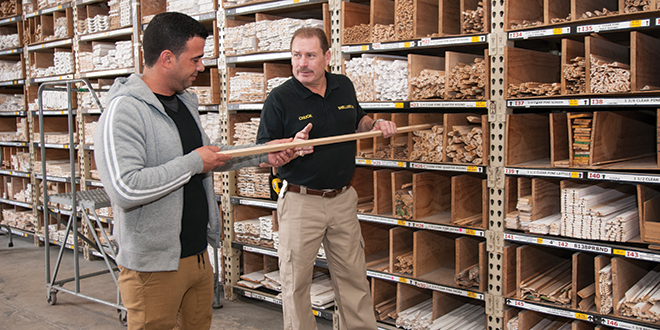
Click the picture to download a PDF of this story.
In the September issue of Hardware Retailing, retailers discussed how superior customer service differentiates their businesses from competitors. But it’s important to remember that there are many elements that go into providing a great in-store experience for customers. Offering excellent customer service goes far deeper than ensuring your employees are friendly and knowledgeable and that you have a large selection of in-stock products.
Consider how else you can fortify your operation’s reputation for service. Some elements may be visible to customers, while others take place behind the scenes. But all points are essential elements of strong customer service.
1. Boost customer service with a succession plan.
A succession plan offers stability in uncertain times. Meet with trusted co-workers, legal and financial professionals to craft a plan that protects your operation.
2. Ensure all team members understand the core of service.
Some employees may not value your operation’s commitment to customer service as much as others. Be sure all your employees know your business’s core values and understand it is critical to give customers attention and care.
 3. Immediately welcome customers with a clean store.
3. Immediately welcome customers with a clean store.
It’s important to present your store in the best light. Be sure cleaning is a regular part of employees’ tasks. Whether it’s mopping high-traffic areas or keeping registers tidy, maintaining a clean store is key for impressing customers.
4. Stay informed on industry news.
Staying current with industry news should be a priority for business owners. Visit Hardware Retailing online regularly to stay connected with breaking news, exclusive interviews, emerging trends and current events.
5. Find dazzling new products.
Adding unique, unexpected items to your inventory is one surefire way to satisfy customers and attract new shoppers. Be sure to visit trade shows, wholesaler buying markets and other industry events to find the latest products. By stocking the right items at the right price points, you can increase sales and please customers.
 6. Invest in training to make your employees experts.
6. Invest in training to make your employees experts.
Access a suite of training resources from the North American Retail Hardware Association (NRHA) to keep employees up-to-date with product and project advancements. Visit nrha.org/online-training now!
7. Tell customers about savings. It’s important to compare your prices to competitors and communicate savings clearly and compellingly to your customers.
8. Find unique ways to recruit.
Retailers must take time to regularly search for new hires to enrich their businesses. Considering different interview procedures, including group interviews, can be beneficial to ensure you’re finding and vetting the best talent possible.
9. Use industry research to benchmark your business.
Knowing how national trends affect the channel is vital. Every year, NRHA publishes a variety of resources that shed light on how you can lower operational costs, offer competitive benefits programs, meet shifting customer preferences and stock new products. Learn more at nrha.org.
10. Manage your inventory to connect customers and products.
Whether you cater primarily to professional crews or make your bread and butter on sales to DIYers, ensuring your business stocks the right inventory is critical. When customers find the exact product they need, they’ll hold your business in high regard. Learn about best practices for managing slow-moving inventory on Page 84.
 Hardware Retailing The Industry's Source for Insights and Information
Hardware Retailing The Industry's Source for Insights and Information







